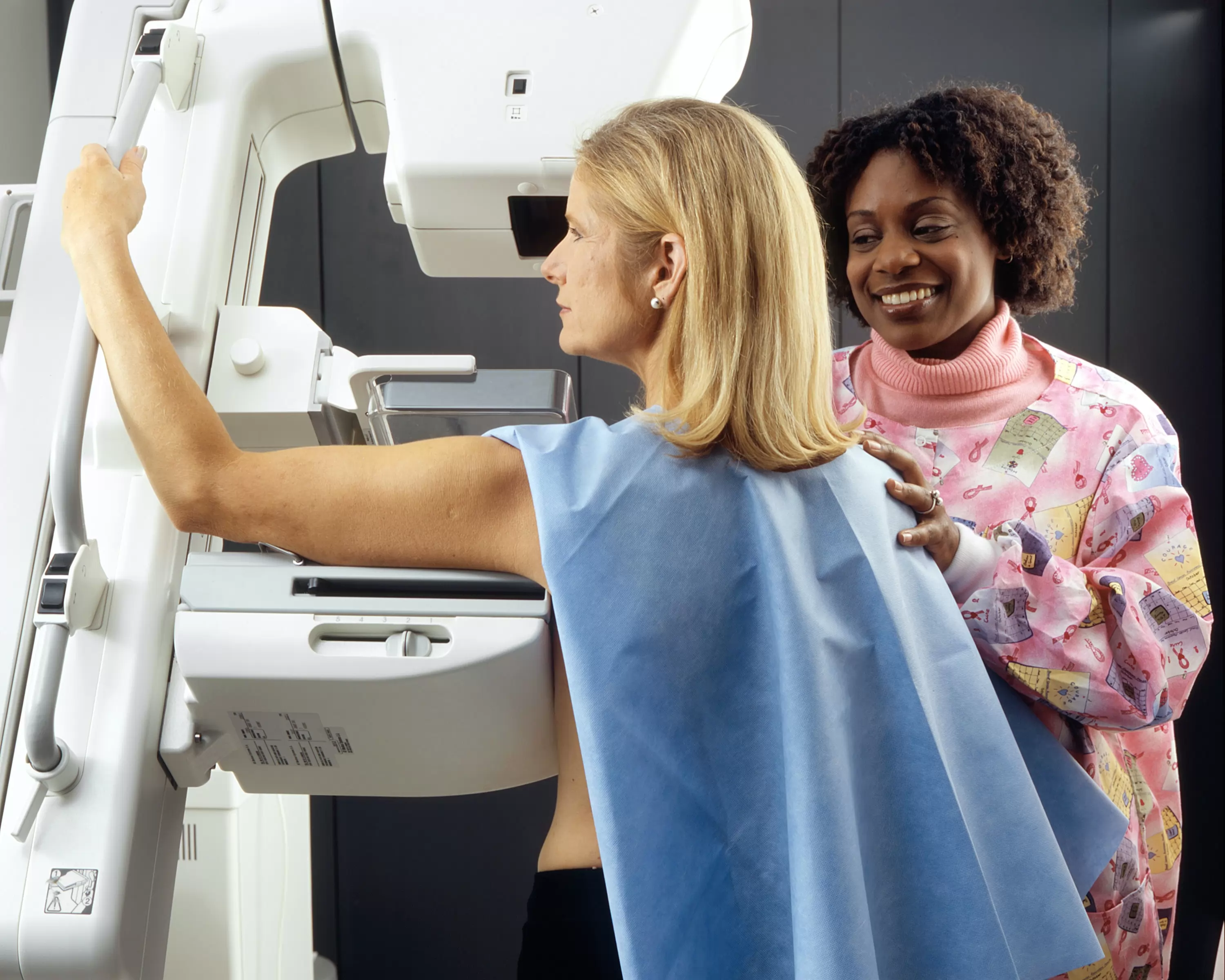Summary of our market study
Since 2020, the global market for aesthetic medicine and plastic surgery has grown significantly. Although the initial impact of the pandemic led to an almost 10% drop in the value of the Spanish market in 2020, to 2.6 billion euros, recovery has been rapid, with demand rebounding in 2021, influencede by factors such as increased personal savings during the downturn and a change in social dynamics leading to greater attention to virtual appearance. The sector is characterized by a high prevalence of non-surgical procedures, which account for 54.4% of the global market. In terms of regional dominance, the USA leads the way with 45% of the sector's revenues, followed by Europe with 25% and the Asia-Pacific region with 23%. Technology plays a key role in the market, as advances enable more effective and less invasive treatments.
In the Spanish market, in particular, the popularity of aesthetic medicine has increased, with 35.9% of the population having recourse to this type of service, including injectable treatments such as botulinum toxin and hyaluronic acid. The market is supported by a professional base of 4,500 to 6,000 practitioners and over 5,000 medical clinics. Demand from young people and the growing acceptance of men are key trends in Spain, suggesting diversity in consumer profiles and sustained market strength.
Rising demand for aesthetic medicine in Spain
Spain has seen a significant increase in the popularity of aesthetic medicine, with a growing number of the population - ranging from around 30.5% to 35.9% - opting for a variety of surgical and non-surgical aesthetic treatments. Women dominate the market, although male participation has increased considerably in recent years, indicating a growing appeal to both sexes. Facial treatments clearly dominate the field of aesthetic medicine, accounting for over 70% of procedures, with botulinum toxin (Botox) and hyaluronic acid injections being the most popular. Treatments such as hair removal, calcium hydroxyapatite injections and photorejuvenation also account for a significant share of the market.
A clear trend is the diversification of demand between different age groups. Younger people tend to seek treatments to combat cellulite or reduce body fat, while older customers want to minimize the signs of aging, such as hyperpigmentation and wrinkles. Men have shown a particular penchant for hair treatments, which account for almost a quarter of all aesthetic procedures in the male population. The Spanish aesthetic medicine market is driven not only by domestic demand, but also by health and beauty tourism, which makes Spain one of Europe's leading destinations. Despite the setback caused by the global pandemic, the market is showing signs of a vigorous recovery, thanks to the increased thriftiness of the Spanish population and the fact that Spain's beauty industry is becoming increasingly competitive.pargne of the Spanish population and increased demand from younger generations influenced by the beauty standards conveyed by social media. The cumulative effect of these trends has had a significant economic impact, with average expenditure per clinic visit reaching almost 1,000 euros. On average, women tend to spend slightly more than men, approximately 573 euros versus 493 euros per session. Geographically, the distribution of the market varies considerably from region to region, with autonomous communities such as Madrid, Andalusia, Valencia and Catalonia standing out for the number of accredited aesthetic medicine centers.
In conclusion, the interplay of changing socio-cultural dynamics, financial factors and technological advances has set the aesthetic medicine market in Spain on a growth trajectory, with a strong bias towards non-surgical, minimally invasive procedures that promise a combination of natural results and comfort for an increasingly diverse consumer base.
Key players in the Spanish aesthetic medicine and plastic surgery sector The Spanish aesthetic medicine and plastic surgery sector boasts a number of key entities playing diverse roles in this booming market. From reputable professional associations and state-of-the-art equipment manufacturers to leading medical educational institutions, the Spanish market has a solid infrastructure to support growth and innovation. Here's a look at some of the key players shaping the landscape of aesthetic medicine in Spain.
Professional associations and societies
- One of the pillars of aesthetic medicine in Spain is the Spanish Society of Aesthetic Medicine (SEME). The SEME oversees several regional associations and ensures that professionals adhere to a standard of excellence and continually improve their knowledge in line with changing global trends. It offers training courses, defines standards of practice and provides practitioners with a platform for exchanging knowledge.
- At regional level, practitioners are grouped together in various associations according to their geographical location. These regional associations are essential to maintaining a solid network of professionals who adhere to the standards and guidelines set by SEME. They play an important role in defending community interests, organizing local events and acting as a link for professionals in their respective regions.
Equipment manufacturers
- The medical aesthetics market is fueled in part by innovative equipment manufacturers specializing in injectables, energy-based devices and cosmeceuticals. These companies are at the forefront of technological advances, providing the medical community with the tools needed to carry out invasive and non-invasive aesthetic procedures safely and effectively.
- Manufacturers of injectable products are key players, with products such as neuromodulators and dermal fillers. These injectables are at the heart of many popular non-surgical procedures in Spain, such as Botox treatments and volume augmentations.
- Manufacturers of energy-based devices make a significant contribution to the arsenal of aesthetic medicine, with offerings of various technologies, such as laser, light, electromagnetic, ultrasound, cryolipolysis and suction-based systems. These devices are used in a wide range of treatments, from hair removal to skin rejuvenation.
- Cosmetics suppliers bridge the gap between traditional cosmetics and pharmaceuticals, offering formulations of highly concentrated active ingredients to complement aesthetic procedures. Their products are often validated by rigorous clinical testing and form an integral part of pre- and post-procedure care.
to understand this market
Detailed content of our market study
 Inforamtion
Inforamtion
- Number of pages : 35 pages
- Format : Digital and PDF versions
- Last update :
 Summary and extracts
Summary and extracts
1 Market overview
1.1 Definition and scope of the study
The aesthetic medicine and plastic surgery market comprises several distinct segments:
- Plastic surgery, a technique for reshaping the body through surgical interventions designed to correct a morphological anomaly or the outward appearance of a patient's body;
- Aesthetic medicine, which covers all non-surgical advice, care and treatment aimed at improving a patient's aesthetic appearance;
- Cosmeceuticals, products halfway between cosmetics and drugs, containing active ingredients for specific dermatological treatments (wrinkles, dark circles under the eyes, etc.).
Plastic surgery therefore exclusively comprises surgical treatments on the patient's body, such as breast surgery, the most popular procedure. Aesthetic medicine, on the other hand, can be performed by general practitioners or specialists. The vast majority of aesthetic medical procedures involve injections under the skin, for example to reduce wrinkles. Cosmetic products are most often used to correct skin ageing, although their efficacy has yet to be proven.
The global market for plastic surgery and aesthetic medicine is growing rapidly, driven in particular by the dynamism of the Asian region, which is currently the main focus of global demand. However, the market remains largely dominated by the United States and Brazil. This growth is due in part to the boom in injectable substances, but also to the renewal of equipment and technologies required for operations and treatments.
Spain is a benchmark country for health and beauty tourism, generating strong external demand. But this demand is just as strong at home, with a growing proportion of the population resorting to aesthetic medicine treatments: in 2020, 35.9% of the population resorted to these procedures, an increase of +5.4 points in two years. This expansion of the aesthetic medicine consumer base suggests very promising prospects for the future of this market in Spain. [ SEME]
1.2 The global market
The global market for aesthetic medicine and surgery comprises two segments
aesthetic medicine (***) cosmetic surgery (***)
The global market for aesthetic medicine is set to grow significantly over the coming years. With a compound annual growth rate (***) of **%, the market size is expected to increase from $**.* billion in **** to $**.* billion in ****.
Market growth is underpinned by growing aesthetic awareness, greater acceptance of aesthetic procedures as a means of altering a person's appearance, and technological advances in both surgical and non-surgical treatments.
Global market size for aesthetic medicine and surgery Global, ****-*****, in billions of USD Source: ****
In terms of segmentation by region, some growth is forecast between **** and ****. In North America, the market valued at *,*** billion USD in **** is expected to reach **,*** billion USD in ****, consolidating its position as the largest region. In Europe, the market is expected to grow from USD *,*** billion in **** to USD *,*** billion in ****, while the Asia-Pacific region, which is also experiencing strong growth, is set to rise from USD *,*** billion in **** to USD *,*** billion in ****.
Regional segmentation of the aesthetic medicine market World, ****-****, billions of dollars Source: ****
When it comes to the most popular operations performed in ****, botulinum toxin (***).
Ranking of leading aesthetic medicine procedures worldwide World, ...
1.3 Spain's booming market
The aesthetic medicine market in Spain has seen remarkable growth between **** and ****. In ****, the market size was *.** billion euros, followed by a slight increase in **** to *.** billion euros. Although in **** there was a slight contraction in the market due to the impact of the pandemic, falling to *.* billion euros, the sector quickly recovered. By ****, the market has reached *.*** billion euros, and by ****, it has continued to grow to *.*** billion euros, reflecting the continuing growth in demand for aesthetic procedures and innovation in the sector. This development is also due to new consumer trends that are strengthening the market.
Size of the aesthetic medicine market Spain, ****-****, in billions of euros Source: ****
Between **** and ****, the number of aesthetic medicine and cosmetic surgery operations in Spain rose significantly. In the face and facial area, operations increased by **.*%, while breast-related procedures rose by **.*%. As for body and limb procedures, there was a considerable increase of **.*%. Overall, the number of cosmetic surgeries rose by **.*% during this period.
Non-surgical treatments also experienced significant growth. Injectables increased by **.*% and facial rejuvenation procedures by **.*%. Other aesthetic treatments increased by *.*%, resulting in total growth of **.*% in the number of aesthetic medicine operations. This increase reflects the growing demand for ...
1.4 The consequences of the Covid-19 pandemic
While the aesthetic medicine market in Spain might have been expected to be affected by the Covid-** pandemic and the consequences of government-imposed closures to contain the spread of the virus, it seems that the post-closure period has helped to boost the sector.
On average,each doctor treated *** patients per month in ****. This value is lower for the months at the beginning of the year (***), and higher towards the end of the year.
Average number of aesthetic medicine patients treated per doctor per month Spain, ****, in number of patients Source: ****
During the period July-September ****, **% of doctors experienced a growth in demand due to post-lockout problems: weight gain, tired skin, etc. In addition, this period also saw a growth in patient numbers due to the postponement of treatments scheduled in the previous two months (***). On the other hand, **% of doctors experienced a significant drop in patient numbers.
Impact of the Covid-** pandemic on doctors' patient bases Spain, ****, in % of physicians surveyed Source: ****
It is also interesting to know how doctors perceive the demand for these treatments in ****. Between July and September, **% of doctors believe the number of patients has increased, **% believe it has decreased and **% believe it has remained unchanged.
Doctors' perception ...
2 Demand analysis
2.1 The growing popularity of aesthetic medicine in Spain
The popularity of aesthetic medicine among Spaniards has risen sharply in recent years. In fact, between **** and ****, the percentage of the population using these services rose from **.*% to **.*%.By ****, this figure will reach **.*% of the population [***].
Percentage of Spanish population using aesthetic medicine Spain, ****-****, as % of total population Source: ****
Three main factors are contributing to the growing popularity of this market:
The demand for a more natural, discreet and reversible beauty treatment Increased demand for this type of treatment from the younger population Slow but steady growth in the number of male users
In ****, awareness of aesthetic medicine among the Spanish population was quite high, with **.*% of those surveyed claiming to know what it was. However, **.*% of those surveyed had no knowledge of these procedures, showing that, although the majority of those surveyed were familiar with the subject, a significant proportion were unfamiliar with aesthetic medicine or had no clear idea of it.
Knowledge of aesthetic medicine among Spaniards Spain, ****, %, %, % (***) Source: ****
In ****, the treatments most associated with aesthetic medicine in Spain show a clear trend towards a link with nutrition, mentioned by **% of respondents. Botox was the second most recognized treatment, associated by **% of the population, while injections came third ...
2.2 The most popular treatments
In ****, the breakdown of aesthetic medicine procedures in Spain was clearly dominated by facial procedures, which accounted for **% of all interventions. Body procedures came second, with **%, while the remaining *% corresponded to other treatment categories. These data reflect a clear preference for facial treatments, which accounted for the vast majority of aesthetic procedures performed in the country that year, not least because they are simple and less invasive than other types of treatment.
Breakdown of aesthetic medicine treatments by type Spain, ****, in % Source: ****
In ****, the most popular aesthetic treatments for men and women in Spain showed significant differences. For women, facial treatments were the most common, at **.*%, followed by body treatments at **.*%. Anti-aging treatments accounted for **.*%, hair treatments for *.*%, and the remaining *.*% were other treatments.
For men, on the other hand, facial treatments accounted for **.*% and body treatments for **.*%. More important, however, were hair treatments, at *%, and anti-aging treatments, at **.*%. The largest group of men was in the category of other treatments, which accounted for **% of procedures, reflecting the more diversified interests in male aesthetic procedures.
Most popular treatments by gender Spain, ****, %, %, % Source: ****
2.3 Reasons for resorting to aesthetic medicine
In general, the main reasons why Spaniards turn to aesthetic medicine are to improve their appearance and achieve a healthy glow. However, the purpose of these treatments tends to vary according to the age of the person undergoing them.
Younger Spaniards turn to aesthetic medicine to boost their self-esteem and look their best, while older people do so to reduce the signs of aging.
The main reason men turn to aesthetic medicine is to maintain a more youthful appearance. Hair treatments are the most popular among men, with **% of male consumers choosing them. Body treatments come second (***). It's interesting to note the difference between the treatments chosen by men and those chosen by women, the latter being more inclined to choose facials as their top priority.
Most popular treatments for men Spain, **** Source: ****
Still on the subject of aesthetic medicine, a recent study carried out in Spain in **** revealed the areas of the body that Spaniards would most like to modify. According to the data, **.*% of those surveyed said they would not change their physical appearance. However, **.**% of participants expressed a desire to change "something about their face", making it the most widespread aesthetic priority.
Turning to more specific areas of ...
2.4 Consumers of aesthetic medicine
Aesthetic medicine is much more popular with women than with men, although this situation is changing. The number of men using this type of treatment in Spain has risen sharply in recent years.
By ****, * out of ** Spaniards were consumers of aesthetic medicine. Of these, **.*% were women and **.*% men.
For face, body and hair treatments, the consumer profile is around **-** years old. For treatments related to reducing the effects of aging on the body, consumers tend to be between ** and ** years old[***].
Overall, the average age of aesthetic medicine consumption in Spain is falling, with more and more young people turning to these treatments. This evolution is mainly due to social networks, which encourage young consumers (***) to use some of these treatments, as they become aware of the "beauty standards" set by Internet users.
The treatments used by young people are mainly lip fillers and other Botox-based preventive treatments.
In ****, average annual spending at aesthetic medicine clinics in Spain varied considerably by gender. Men spent an average of €*** per year, compared with €*** for women. However, if we consider the total average annual expenditure, which includes the number of visits and other additional services, it rises to €*,***.
This difference in spending reflects ...
3 Market structure
3.1 A market structured around equipment manufacturers and professionals
The aesthetic medicine value chain comprises several stages. First, raw materials are supplied to equipment manufacturers, who process them to produce medical equipment. Next, medical centers, hospitals and aesthetic medicine centers purchase these, which are ultimately used to perform a non-surgical procedure on end patients.
It is estimated that the Spanish aesthetic medicine market is responsible for around ***,*** direct and indirect jobs. There are two main types of player in the aesthetic medicine market: manufacturers of aesthetic equipment and professionals or treatment centers. The manufacturers' market is characterized by key specialization due to the demanding technology and cost of medical equipment for aesthetic purposes. There are three main segments within the market: injectables, energy-based equipment and cosmeceuticals.
Injectables are chemical substances introduced into the skin via a needle to strengthen muscles or plump up the skin, thereby reducing the appearance of wrinkles. The two main types of injectables are neuromodulators, such as botulinum toxin, which are used to weaken and paralyze facial muscles, and dermal fillers, such as hyaluronic acid, which are placed under the skin to give volume and support to different areas of the face. Energy devices are those used by practitioners to perform aesthetic medicine treatment. Depending on ...
3.2 Where aesthetic medicine is practiced
Aesthetic medicine is a practice that tends to be essentially private in Spain, and is therefore not a medical specialty of the MIR (***). Spain's autonomous communities are responsible for authorizing the centers that can offer aesthetic medicine services, ensuring that they comply with the specific U.** heading.
It is estimated that there are between *,*** and *,*** professionals in Spain who regularly practice aesthetic medicine. In addition, from **** onwards, ** teaching centers across the country will offer courses enabling professionals to specialize in the field of aesthetic medicine.
Over the past six years, the number of centers authorized by the Ministry of Health to practice aesthetic medicine in Spain has increased considerably. In ****, there were *,*** registered centers, a figure that rose to *,*** in ****. This growth has accelerated over the past three years, reaching a total of *,*** centers in ****, representing a **% increase since **** and almost double that of ****. This growth reflects a growing demand for aesthetic medicine services in the country[***].
Number of centers practicing aesthetic medicine Spain, ****-****, in units Source: ****
Geographically, the top * autonomous communities in Spain in terms of the number of centers authorized to practice aesthetic medicine are :
Madrid Andalusia Valencia Catalonia Aragon
For aesthetic medical procedures, **% of consumers go to ...
3.3 Geographical distribution
In Spain, aesthetic medicine professionals are grouped into associations according to the region in which they operate. All these associations are affiliated to the SEME (***). All the associations that exist in Spain are listed below.
Source: ****
4 Offer analysis
4.1 Treatments and techniques used in aesthetic medicine
The range of aesthetic medicine techniques and treatments available in Spain is very broad. The Spanish Society of Aesthetic Medicine (***) lists the main techniques and treatments available.
Source: ****
4.2 Price analysis
Non-surgical procedures
Surgical procedures
Here are the prices for the most common procedures according to the patient's sex
4.3 Supply trends
In ****, the aesthetic medicine market in Spain will feature several trends that are revolutionizing the sector and redefining beauty standards. Here are some of the most striking trends:
Personalized treatments: Artificial intelligence (***) and machine-learning algorithms make it possible to create individualized aesthetic plans based on each person's unique characteristics, such as facial structure and skin type.
Non-invasive procedures: these treatments, such as laser and radiofrequency treatments, are expected to continue to grow in popularity due to their effective results without the need for surgery or long recovery periods.
Patient education and empowerment: Patients are becoming better informed and using online resources to better understand treatments, enabling them to make more considered aesthetic decisions.
Hybrid treatments: the combination of different technologies, such as radiofrequency and ultrasound, will become commonplace to offer more complete and effective results in less time.
Natural results: the trend towards a more natural appearance prevails, with the emphasis on subtle improvements that enhance personal characteristics rather than radical changes.
Procedures with minimal downtime: convenience is key, with treatments that allow patients to quickly return to their daily routines.
Emphasis on skin microbiome health: aesthetic treatments are increasingly focused on balancing the skin microbiome to preserve skin health from ...
5 Regulations
5.1 legislation
The regulations governing the practice of aesthetic medicine in Spain are set out in standard UNE-EN *****:****+A*:**** - "Aesthetic medical services and non-surgical medical treatments"[***].
This is a European standard that regulates the quality of aesthetic medicine services as a whole, such as the training required of the professionals who practice it, minimum facility requirements, patient care by non-medical staff, marketing and advertising standards, emergency protocols, etc.
The SEME (***) also defines part of the regulation of aesthetic medicine in Spain. Here's the current legal situation according to the SEME[***].
Since ****, Royal Decree ****/**** on the "general bases of health centers, services and establishments" defines U.** as aesthetic medicine units (***). Creation of associations or collegiate sections of Aesthetic Medicine in Medical Colleges. Since ****, the Medical Colleges have introduced the possibility for members who so wish to obtain a training diploma in Aesthetic Medicine according to the scale established by the WTO.
6 Positioning the players
6.1 Segmentation
- Clínica Dorsia Cirugía y Medicina Estética
- Clínica Estética Massana Burgos
- Clinica Medicina Estetica Majadahonda - MAWA CLINIC
- Eternal Beauty Clínica Centro De Estética
- Clínica Medicina Estética Córdoba
- SEME (Sociedad Española de Medicina Estética)
All our studies are available online in PDF format
Take a look at an example of our research on another market!
 Choosing this study means :
Choosing this study means :
Access to more than 35 hours of work
Our studies are the result of over 35 hours of research and analysis. Using our studies allows you to devote more time and added value to your projects.
Benefit from 6 years' experience and over 1,500 industry reports already produced
Our expertise enables us to produce comprehensive studies in all sectors, including niche and emerging markets.
Our know-how and methodology enable us to produce reports that offer unique value for money.
Access to several thousand articles and paid-for data
Businesscoot has access to all the paid economic press as well as exclusive databases to carry out its market research (over 30,000 articles and private sources).
To enhance our research, our analysts also use web indicators (semrush, trends, etc.) to identify market trends and company strategies. (Consult our paying sources)
Guaranteed support after your purchase
A team dedicated to after-sales service, to guarantee you a high level of satisfaction. +44 238 097 0676
A digital format designed for our users
Not only do you have access to a PDF, but also to a digital version designed for our customers. This version gives you access to sources, data in Excel format and graphics. The content of the study can therefore be easily retrieved and adapted for your specific needs.
 Our offers :
Our offers :
the aesthetic medicine market | Spain
- What are the figures on the size and growth of the market?
- What is driving the growth of the market and its evolution?
- What is the positioning of companies in the value chain?
- Data from several dozen databases
5 reports pack (-15%) ES Spain
- 5 reports at €75.6 excluding VAT per study to choose from our Spanish catalogue for 12 months
- Save 15% on additional studies purchased
- Choose to be refunded any unused credit at the end of the 12-month period (duration of the pack)
See the terms and conditions of the pack and the refund of unused credit.


















